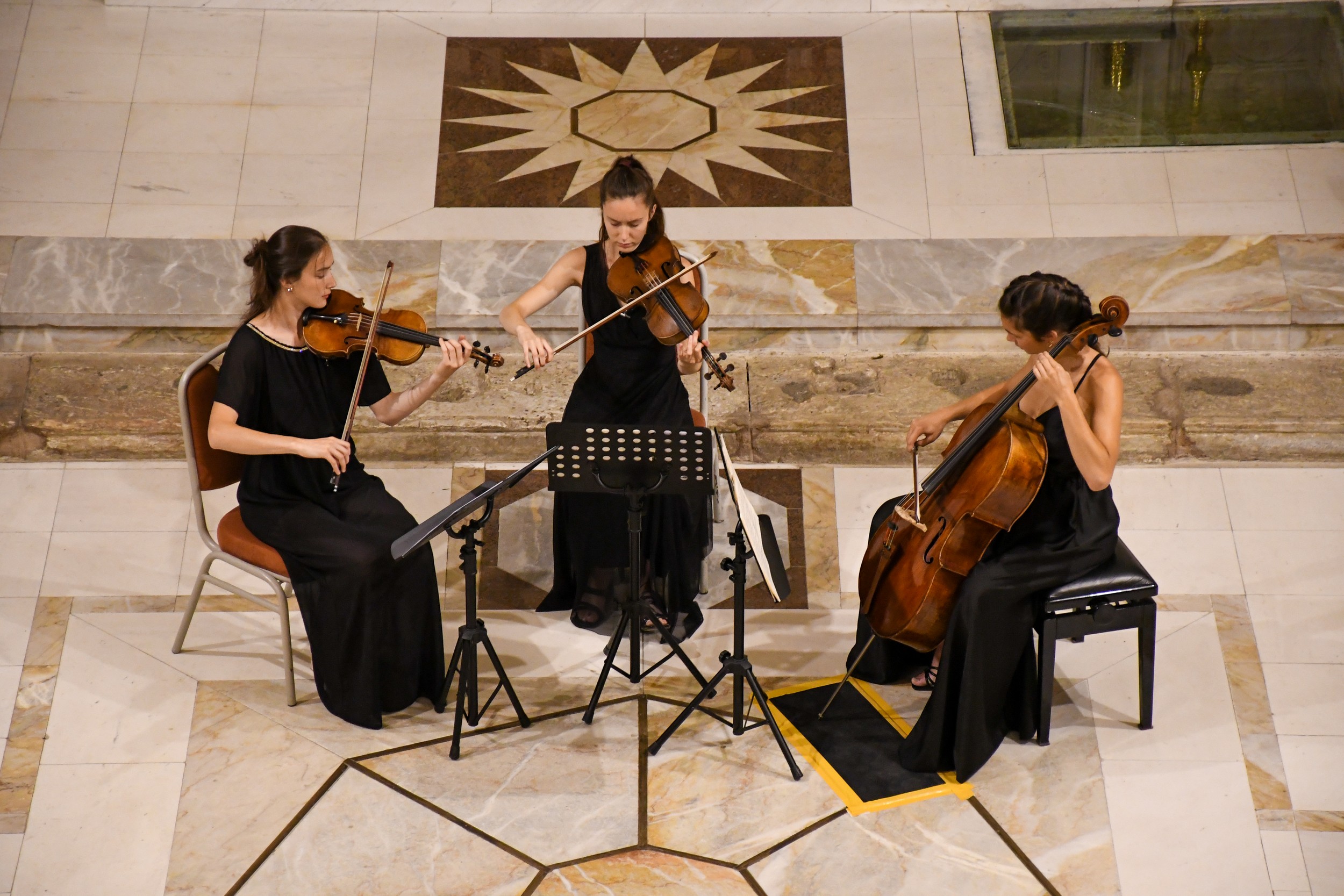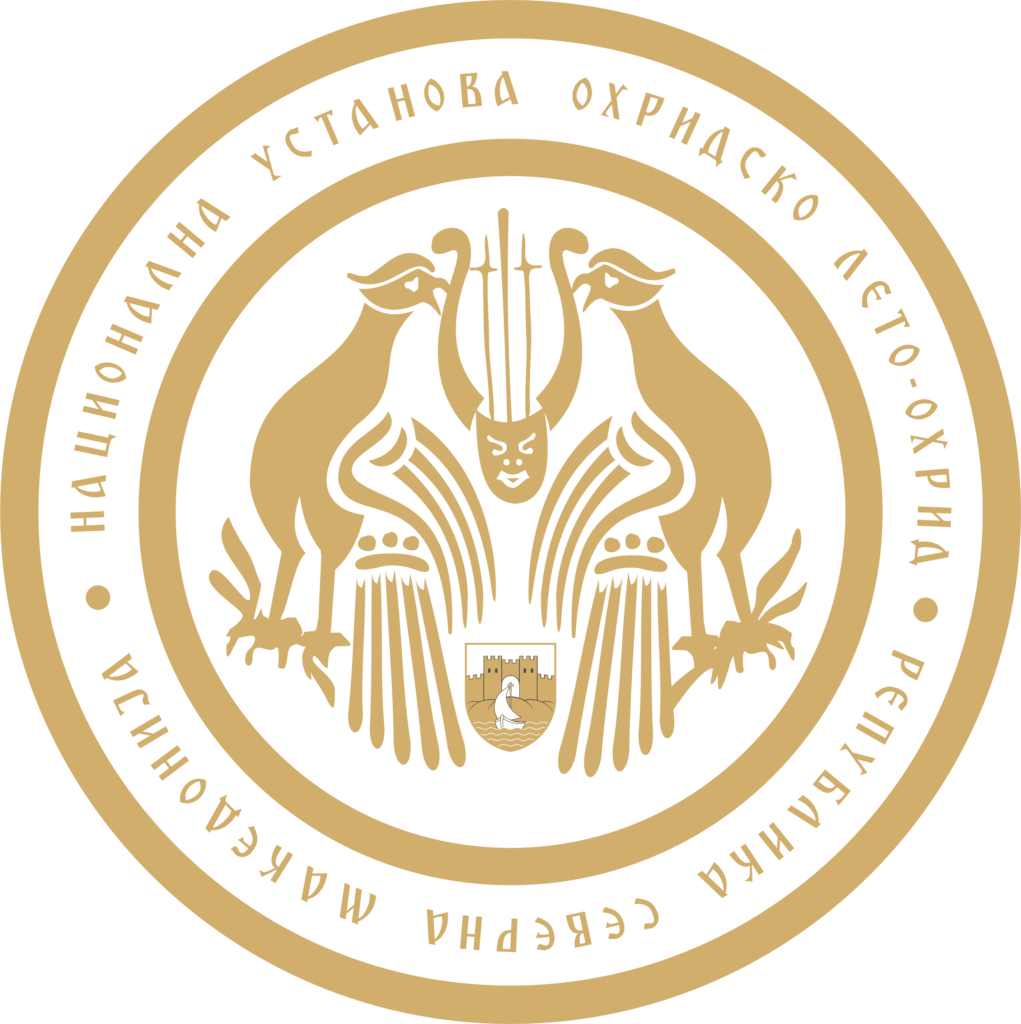
The best way to inject freshness in the concert programme of Ohrid Summer Festival is by inviting young artists. Magdalena, Anna and Caroline are three sisters consisting the string trio Sypniewski, originating in Poland, raised and educated in Paris. Their biographies announce talents with bright future, but from the very first played tones you realise it is about a seriously professional ensemble with outstandingly intuitive and convincing performance. Furthermore, when the repertoire includes carefully chosen pieces, it is expected to attend a nice concert.
Beethoven’s chamber music is an excellent choice for each concert because it is a reflection of his extravagant symphonism in miniature and of course, it is key of the status of Beethoven as one of the most adored composers in the history of western music. The Serenade in D major for string trio from 1797 is from his early works and belongs to the category of pieces which, in musicology sense, are not typical for the Beethoven’s serious sensibility. Those are the “lighter” compositions aimed for entertainment in the night parlour events from the late 18th century in Vienna. However, the Beethoven’s inventiveness can be seen as a peculiarity of this bright and likeable piece through the announcement of one of the most popular motifs in the history of the music in general – the motif from the Fifth Symphony which appears in the March from the Serenade.
The young artists from the Sypniewski Trio, with especially precise coherence in-between the violin, viola and cello parts played the Serenade in a single breath, putting to life the forgotten parlour-virtuoso style in front of the audience in St Sophia. The interpretation of this charismatic ensemble followed all the finesses written in the Beethoven notes, accenting the sudden dynamic contrasts, so much recognizable for his creative individuality. Completely stable in intonation and with technical superiority, the talented musicians showed sufficient individuality in their solo parts, each of them on her instrument, but also blended in a coherent music image. The enthusiasm which extraordinarily talented artists put in the dancing “ingredients” in the Minuet, Scherzo, and the Variations simply captivates the audience. Understandably, they performed the Polonaise with a special elegance, and we heard it on the encore, too, with an unhidden desire to highlight the Polish origin of the artists.
By performing the string Intermezzo and the Serenade in C major from the Hungarian composers Zoltan Kodaly and Ernst von Dohnányi, the Sypniewski Trio only confirmed the impressions we noticed at Beethoven, and that is playing with a special fervency and zest, so much recognizable in young musicians. Of course, it was very interesting for the audience to hear part of the work by Dohnányi, a less known author from the era of the late Romanticism. Through a clear “communication” between the violin, viola and cello, we heard a melancholic mood in the Romance, an artistic virtuosity in the Rondo, and especially impressive Scherzo, full of perfectly intonated “chaotic” polyphony. Besides the feeling of natural guidance of the musical phases decorated with controlled vibrato, micro crescendos in long tones, the three artists simply dance while playing, creating a bright sound expression which serves the music to “speak” a language understandable for everybody. It is an interpretation that strives to be liked, to make a close contact with the audience, not exceeding the limits of good taste.
Even though countless times mentioned, we will remind ourselves of the truth that the ambience and acoustics of the church St Sophia are simply irreplaceable and at intimate concerts like this one give an additional dimension.
Vikica Kostoska – Peneva – musicologist

